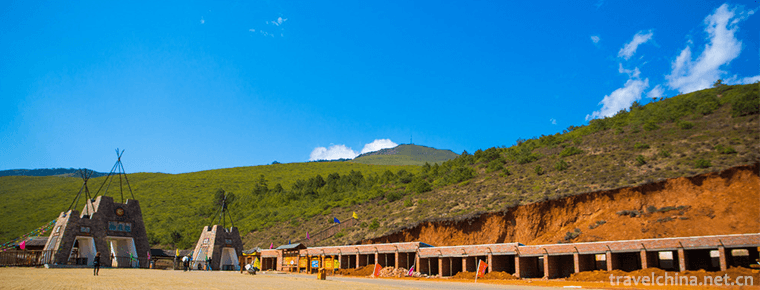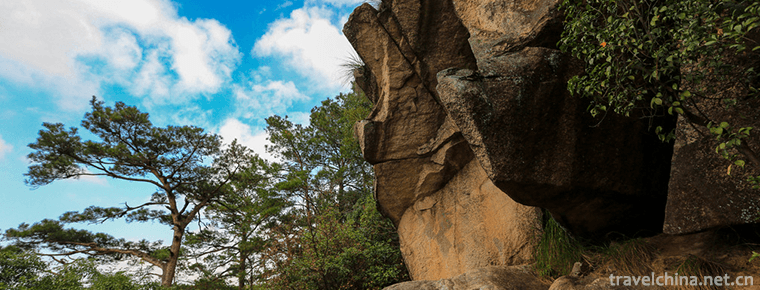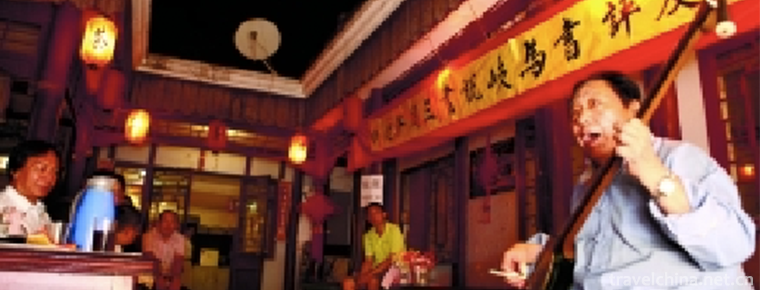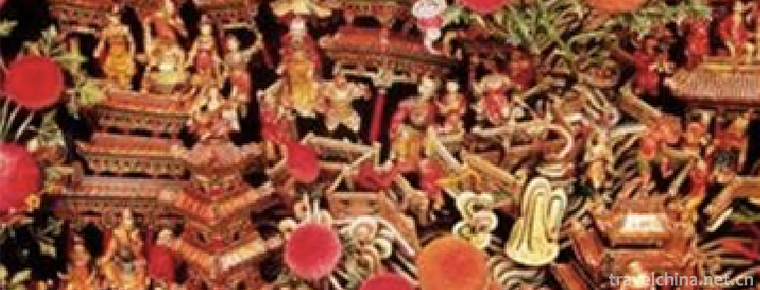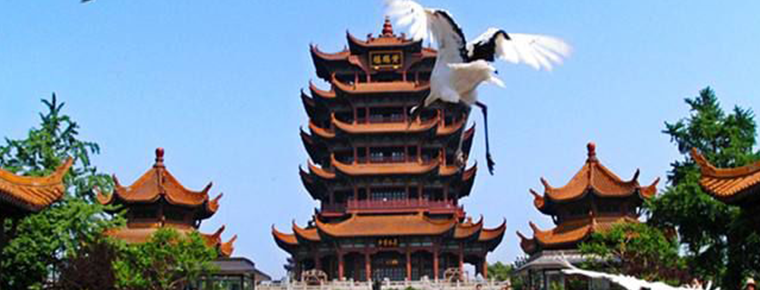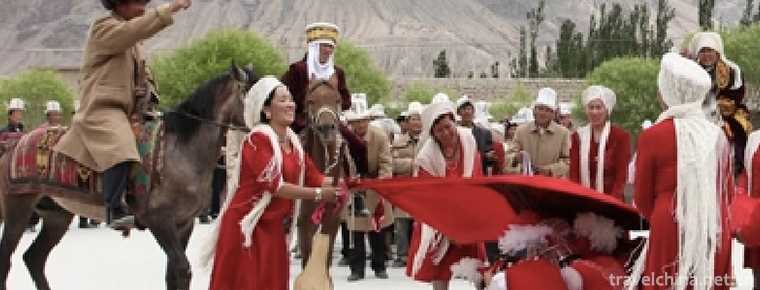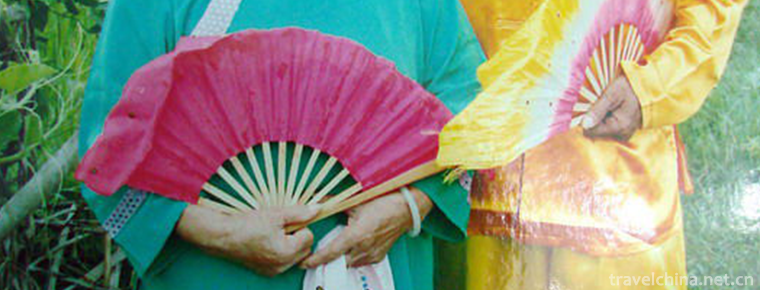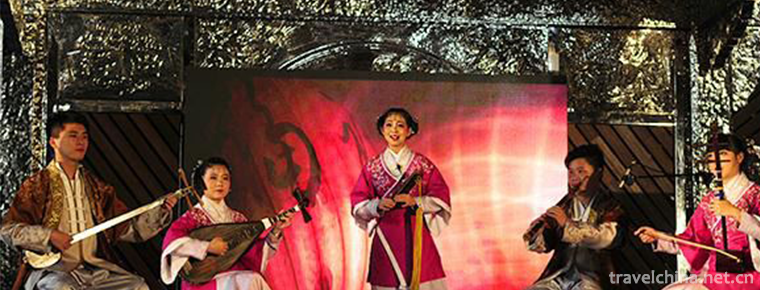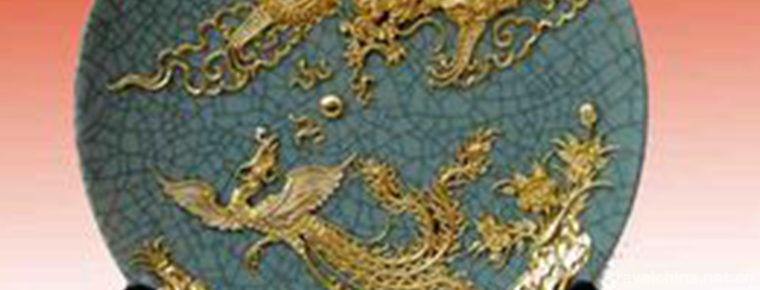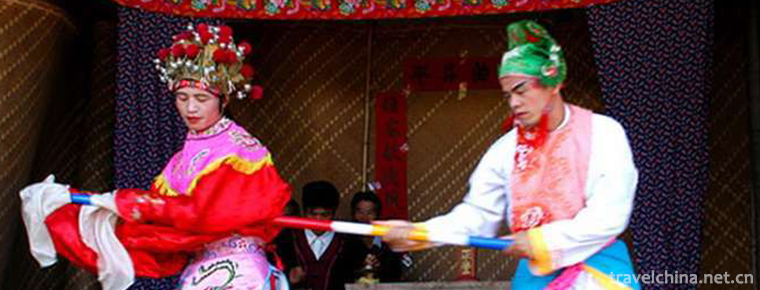Hanchuan good books
Hanchuan good books
Hanchuan Shanshu is a kind of traditional folk music which combines rap and singing in Hubei Province. Since the Qianlong period of the Qing Dynasty, it has a history of 260 years. It has been prevalent in Hubei Province, Kaifeng Henan Province, Leshan Sichuan Province and most of Hunan Province. So far, only the good calligraphers in Hanchuan City of Hubei Province have inherited and developed this kind of music. It is commonly known as preaching good books. Because artists often use "not to speak, tears full face" to start, so folk jokes call it "not to speak".
He Zouhuan, a well-known performance artist and national first-class actor, also believes that the local tone of Hanchuan Shanshu, which integrates the idea of persuading people to be good, has a strong epochal significance and needs to be further inherited and promoted.
On May 20, 2006, the opera was approved by the State Council and listed in the first batch of national intangible cultural heritage list.
Historical evolution
Good books are an important part of traditional folk literature. According to the analysis of the "storytelling figurines" unearthed from the ancient tomb of Tianrizhen, Sichuan Province, they sprouted in the Han Dynasty, and appeared in the Tang Dynasty with the same rhyme, parallel prose and "vulgar speaking" with both rap and singing. Since the Song and Yuan Dynasties, the types of rap and singing literature have been expanding day by day. In Yongle period of Ming Dynasty, there were "Qin Song Goodness Books" printed all over the world. In the Qing Dynasty, good books developed from desk literature to singing literature, and produced good calligraphy and folk art, which was popular in the eight banners of Zhili provinces, then declined in the north and flourished in the south. Besides Wuhan, Xiaogan, Jingzhou and Huanggang in Hubei, there were also artists engaged in such activities in Shanghai, Chongqing, Henan Kaifeng, Sichuan Wanxian, Hunan and Tianjin. After the founding of New China, the good books in the South gradually disappeared. Only the artists in Hanchuan, Caidian and Xiantao of Hubei inherited and developed this kind of music, and gradually formed the "good books in Hanchuan" centered on Hanchuan.
The reason why good books take root, blossom and bear fruit in Hanchuan is that in history Hanchuan was the convergence area of many rivers. From the Qing Dynasty to the Republic of China, nine subsidies were opened on both sides of the Xianghe River and returned to Hanshui. Water towns gradually became plains, and people gradually changed from fishing to farming. Life became more stable, and the demands for culture and education became increasingly urgent. During the Daoguang period, the official propaganda of the oracle was gradually replaced by the folk propaganda of filial piety to parents, harmonious families, friendly neighborhoods, rescue and emergency. At first, it was only preached around the Lantern Festival and the Chinese New Year Festival, and then gradually developed into regular activities. It could be preached in fields, streets and lanes, tea houses and restaurants, and was welcomed by villagers. Around 1936, from the countryside to Wuhan and other towns.
As a narrative style, Shanshu is not required to make up as dramas do, and its form is simple and easy to inherit, so Shanshu was quickly accepted, and developed into a kind of folk music in Hanchuan.
Inheritance status
It is mainly prevalent in Hanchuan, Hanyang and other counties in central Hubei, and in Wuchang and Hankou towns, of which Hanchuan County is the most prevalent. During the Anti-Japanese War, Hanchuan artists introduced it to Chongqing and Wanxian, Sichuan. Good books originated from the "propaganda oracle" in Shunzhi period of Qing Dynasty. The "propaganda of the oracle" is the story of propagating feudal ethics. In Guangxu's reign, "preaching the oracle" was replaced by "Ten Great Goods". It specifically put forward ten good deeds, such as filial piety to parents, harmony in the countryside, setting up righteousness, setting up a righteous ferry, offering tea and sympathizing with lonely and poor people. The map of Hubei advocated honesty and kindness, diligence and frugality, and opposed the evil of rapists and natural harm.
"Hanchuan Shanshu" has more than 300 excellent articles, and more than 100 articles are often preached. More than 300 people specialize in the creation of "Hanchuan Shanshu".
In the new century, influenced by the impact of foreign cultures and the rise of multi-cultures, as well as the death of some accomplished artists, few young people can make their own distinctions, and some excellent songs are on the verge of being lost. Hanchuan Shanshu encounters unprecedented difficulties in the current inheritance and development. Young artists are out of file, and the loss of tradition is serious, which urgently needs support and protection.
The state attaches great importance to the protection of intangible cultural heritage. On May 20, 2006, the opera was approved by the State Council and listed in the first batch of national intangible cultural heritage list.
Inheritance significance
Good book is a kind of folk music that combines rap and singing. Since the Qianlong period of the Qing Dynasty, it has a history of 260 years. It has been prevalent in Hubei, Henan, Sichuan and Hunan. Only the good calligraphers in Hanchuan inherited and developed this kind of music. The aria has a strong Jianghan Plain characteristics, and there are 13 remaining music cards. "Hanchuan Shanshu" has attracted wide attention from scholars at home and abroad.

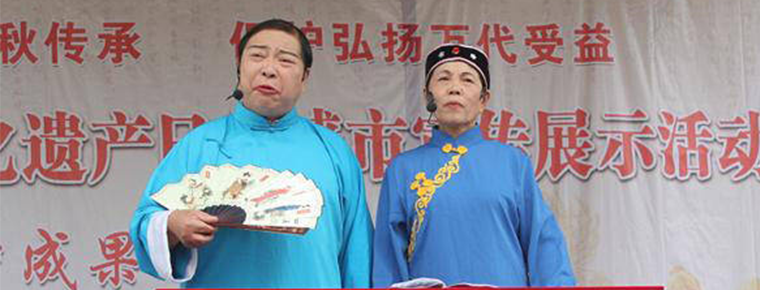
-
Gesara Ecotourism Scenic Area
Gesala Ecotourism Area is located in Yankou Township, Waluo Township, Hot Spring Township and Qinghe Township in the northwest of Yanbian County, Panzhihua City. It is located at the junction .
Views: 100 Time 2019-01-12 -
Drum Mountain
Gushan is located in the east of Jin'an District, Fuzhou City, Fujian Province, and on the North Bank of Minjiang River. It is about 8 kilometers away from the downtown area. It is one of the most fam.
Views: 100 Time 2019-01-12 -
Zhanqiao
Qingdao Trestle Bridge is one of the scenic spots of Qingdao Seaside Scenic Spot. It is the first national scenic spot announced by the State Council in 1982, and also the first national AAAA-level sc.
Views: 139 Time 2019-03-09 -
Beijing storytelling
Beijing Book Review is a traditional art of rap and singing. Legend has it that Liu Jingting (1587-1668), a Southern Jiangnan storyteller, came to Beijing in the late Ming and early Qing Dynasties.
Views: 452 Time 2019-04-04 -
Sweat green
"Khan Qing Gele" is a heroic epic of the Mongolian people in Haixi. In the form of rap and speech, it tells the story of the Mongolian heroes destroying demons and saving the people, flashin.
Views: 207 Time 2019-05-02 -
Legend of Yellow Crane Tower
The legend of the Yellow Crane Tower has a long history, and has been accompanied by the repeated destruction and construction of the Yellow Crane Tower.
Views: 107 Time 2019-05-04 -
Kirgizyolon
The "Yolong Song" of Kirgiz is a kind of folk etiquette song spread in the Kirgiz inhabited area living in Pamir area. As a cross-ethnic, cross-cultural and cross-regional phenomenon of folk.
Views: 292 Time 2019-05-09 -
Leizhou song
According to the records in historical books, Leizhou songs were prevalent as early as the Song Dynasty. After the 1990s, people divided Leizhou dialect into different rhymes to express different cont.
Views: 84 Time 2019-05-11 -
southern accent
Nanyin, also known as "string" and "Quanzhou Nanyin", is the oldest ancient music in China. During the Han, Jin, Tang and Song dynasties, the immigrants from the Central Plains bro.
Views: 194 Time 2019-06-07 -
Xiamen lacquer line carving skills
Xiamen lacquer line carving technique is to use old brick powder, large paint and cooked tung oil as raw materials to mix, repeatedly beat into soft and resilient clay (commonly known as "lacquer.
Views: 84 Time 2019-06-12 -
Yongan Daqiang Opera
Yongan Daqiang Opera was formed in the mid-Ming Dynasty. It is a genre of Yiyang Opera. It is called Daqiang Opera because it is "big gong, big drum and big voice singing high tune". During .
Views: 215 Time 2019-07-14 -
Jinhua Alsophila Nature Reserve
Jinhua Alsophila spinulosa nature reserve is a provincial nature reserve approved by Sichuan Provincial People's Government in 1987. In sifangjinggou, Jinhua Township, 48 kilometers southwest of Rongxian City.
Views: 156 Time 2020-10-15
